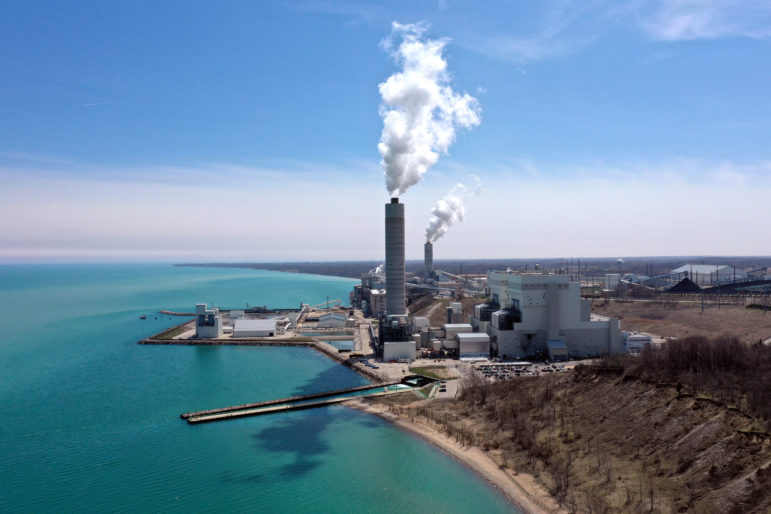We Energies’ Costly Coal Fixation
It’s actually costing the company more to burn coal. Its stockholders should revolt.
Today, as coal, oil and gas are being replaced with renewable energy, new investment opportunities are opening up around the world. Not only is this transition irreversible because of the dire threats from climate change, but the latest innovations in clean energy already make it less expensive than fossil fuels. Getting in on the ground floor–or maybe the first floor by now–has always been been an investor’s dream — as this building can only go up. Moving to clean, renewable energy sources not only is the right thing to do; it now makes financial sense as well. Seldom has there been a better opportunity to promote everyone’s welfare and make money doing it.
Unfortunately, in a last-ditch effort to delay the inevitable, Wisconsin energy providers (We Energies and its parent company WEC Energy Group in particular) continue to rely on fossil fuel, primarily coal. And coal costs keep rising. Investors might be surprised to learn that We Energies could save $75 million each year by simply shutting down its south Oak Creek power plant and purchasing available energy from the Midwest Independent System Operator (the MISO grid). This was the finding of an independent economic analyst at a rate case hearing last year in Madison. (Yes, that’s an immediate savings of $75 million and every year after.)
Given the growing expensiveness of coal energy, it’s not surprising to learn that government projections show our country to be “on track to produce more electricity this year from renewable power than from coal for the first time on record.” The New York Times reports that, despite the Trump administration’s strongest efforts to bolster the coal industry, these efforts “have failed to halt the powerful economic forces that have led electric utilities to retire hundreds of aging coal plants since 2010 and run their remaining plants less frequently.” And, most notably, “The cost of building large wind farms has declined more than 40 percent in that time, while solar costs have dropped more than 80 percent.”
A 2020 report/paper from the Rocky Mountain Institute documents the substantial and increasing amounts of money to be saved by eliminating all coal plants immediately and replacing them with clean, renewable energy operations. It estimates that “replacing the entire fleet of global coal plants with clean energy plus battery storage could be done at a net annual savings as early as 2022. The rapidly declining costs of renewables push net annual savings to $105 billion in 2025. All this is before considering coal’s dire health, climate, and environmental impacts, or accounting for the social and environmental benefits of reducing pollutants. Currently, coal phaseout hasn’t kept pace with eroding economics.”
The reality that fossil fuel energy can only move in one direction–deeper into the red — has not been lost on investment firms, including the world’s largest asset manager, BlackRock, with its almost $7 trillion in investments. On January 14, 2020 , the New York Times reported that founder and chief executive Laurence D. Fink announced that environmental sustainability would now become his firm’s core goal in making investment decisions. The article focused on Fink’s annual letter to the chief executives of the world’s largest companies where he declared that BlackRock would soon be exiting investments that “present a high-sustainability-related risk” (i.e., those in coal producers). Mr. Fink’s letter went on: “The evidence on climate risk is compelling investors to reassess core assumptions about modern finance.” The firm, he wrote, would also introduce new funds that shun fossil-fuel oriented stocks, move more aggressively to vote against management teams that are not making progress in sustainability and press companies to disclose plans ‘for operating under a scenario where the Paris Agreement’s goal of limiting global warming to less than two degrees is fully realized.'”
The argument, then, is straightforward: Fossil fuels are not renewable. They are a limited energy source, and they cost more and more to access. Clean energy sources do not run out, and are readily available. They are as close as the sunlight and wind on your faces. Batteries with greater and greater storage capacities are being developed now and will continue to be (just one of the emerging spin-off industries). And so, while fossil fuel operating costs continue to rise, the costs for renewables are decreasing. Finally, once a science-based, environmentally-conscious administration is in charge, America’s renewable energy industry will experience a dramatic growth spurt.
Wisconsin energy investors, I ask you: What’s keeping you from acting in your financial best interest? And in the best interest of all of us? It is time for investors in companies like We Energies, which are wasting money while polluting the world, to sell their stock and invest in more smartly run companies.
Carl Lindner is a University of Wisconsin-Parkside Professor emeritus.
Op-Ed
-
Wisconsin Candidates Decry Money in Politics, Plan to Raise Tons of It
 Dec 15th, 2025 by Ruth Conniff
Dec 15th, 2025 by Ruth Conniff
-
Trump Left Contraceptives to Rot; Women Pay the Price
 Dec 8th, 2025 by Dr. Shefaali Sharma
Dec 8th, 2025 by Dr. Shefaali Sharma
-
Why the Common Council’s Amended Budget is Good Policy for Milwaukee
 Nov 20th, 2025 by Alds. Marina Dimitrijevic and Russell W. Stamper, II
Nov 20th, 2025 by Alds. Marina Dimitrijevic and Russell W. Stamper, II





















Excellent essay. There is a distinction to be made between “renewable” energy and “clean/green” energy. For example, hydropower is renewable, but large dams destroy ecosystems, so they are not “clean/green.” No solution is without its footprint, but solar and wind are widely recognized as the cleanest and greenest options.